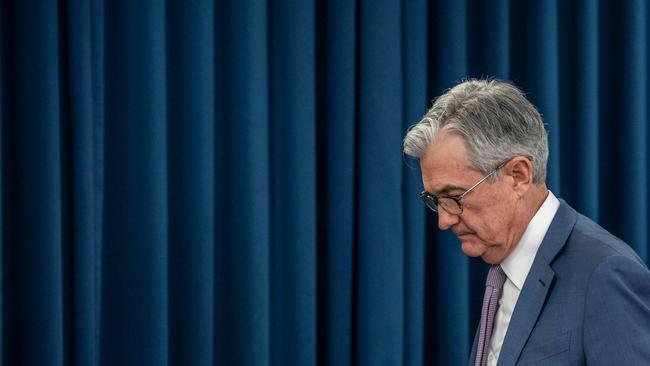
Australia has its own version of the US bond problem, but our tangle is harder to fix and, unfortunately, has not yet been fully recognised. However, as I will describe below, the US is embracing solutions we may have to copy.
The US bond crisis was stark. At the end of 2019, $US10.5 trillion in bonds had been issued by companies based in advanced economies – mainly the US. That was twice the level that existed at the time of the global financial crisis.
Of that $US10.5 trillion, a staggering 50 per cent was issued by companies carrying BBB, the lowest investment-grade rating. Any downgrading of these companies would send their bonds into non-rated junk territory. Company by company, the rating agencies were under great pressure not to take that step because a large number of the holders of these corporate bonds were forbidden by their regulations to hold non-rated securities. They would have to sell.
But already the BBB bonds were selling at big discounts and some were yielding more than 10 per cent. Companies don’t have the available cash to buy them back, and so in effect were being prevented from raising debt capital. If there was widespread downgrading of ratings, the US faced a meltdown in its capital markets. Last night the US Federal Reserve announced would start buying these bonds and might even take issues direct from companies. In doing so, it was averting a huge looming US crisis.
From relief to ruin?
In Australia we do not have the same widespread corporate bond problem because our companies did not raise vast sums of capital via these securities. Our version of the problem is that a vast number of private companies have been given payment relief by their bankers but are trading while insolvent because the temporary rules allow them to do so.
Normally the provisions of the Companies Act make directors of a company personally liable if they trade while insolvent. This causes companies to face any crisis very quickly —usually the best way to solve it. But as part of the COVID-19 measures, the government passed legislation that gives directors six months of temporary relief from personal liability for trading while insolvent.
According to a survey by the Australian Institute of Company Directors, around 16 per cent of small and medium enterprises say that the six-month relief from personal liability for trading while insolvent influenced their board’s decision on whether to continue trading, Sixteen per cent is a staggering figure.
A vast number of these companies are running up unsecured debt, so if they fail they will take with them a large number of currently solvent Australian companies.
The other side of that danger is the $101 billion in business loans have been deferred by the banks. An even greater number of mortgages have been deferred.
If these combines fail it means potential carnage for the Australian banking sector and a disaster for employment.
NAB’s chief executive Ross McEwan has started making contact with both business and individual customers who have deferred loan payments. McEwan reveals that about 10 to 15 per cent of them have restored payments. The rest – that’s more than 85 per cent – want to continue deferring payments. Many hope to get their job back or restart their business.
The government is hoping for a V shaped recovery which will wipe away these problems. But like the US, Australia will have to face the fact that the task is much more complex.
McEwan says “I don’t think you can have such a hit to the economy and have it coming back as quickly as people expect….., this economy will start really working again in 2022”.
More help needed
The aggressive bond-buying strategy by the US Federal Reserve indicates that the Fed now also believes that the economic recovery from the COVID-19 crisis will be extended with credit markets requiring extensive support.
Under the latest guidelines, the Fed said it will buy on the secondary market, individual bonds that have remaining maturities of five years or less. Those purchases will be in addition to the bond ETFs that the Federal Reserve has been buying.
The issuers must have been rated BBB- or /Baa3, depending on the agency. That means it is tackling the low-rated debt, which is where the potential crisis is.
The Federal Reserve will also launch its Primary Market Corporate Credit Facility which will enable bond purchases direct from corporations. In addition, the Federal Reserve will participate in issues of syndicated loans. The Fed is also opening its “Main Street” lending facility and has began accepting registration from lenders that want to participate in the program. The loans can range from $250,000 to $300 million.
In a strange way the US Federal Reserve is setting itself up as a banker to corporate America. The Australian Reserve Bank will be watching the US actions closely and may have to follow.






When the US Federal Reserve last night tackled the one of the biggest single problems facing the American business sector – the US bond crisis – American sharemarkets staged a spectacular recovery. The Dow Jones index was down 760 points at one stage but closed up 157.